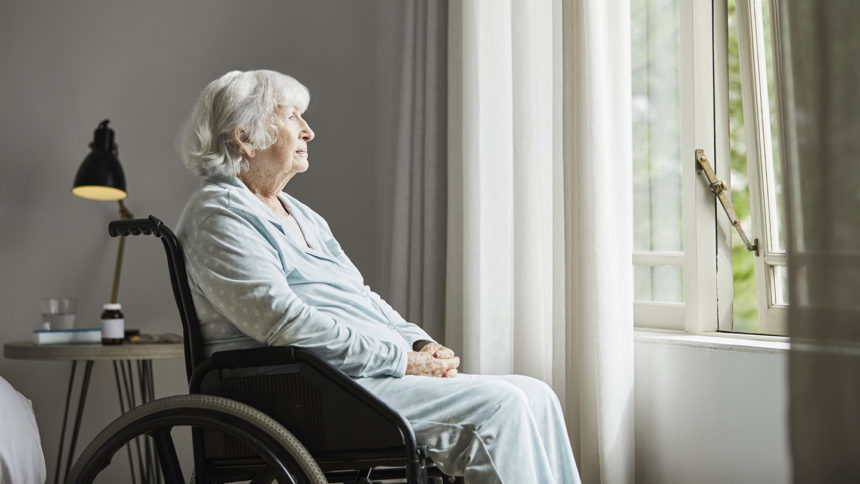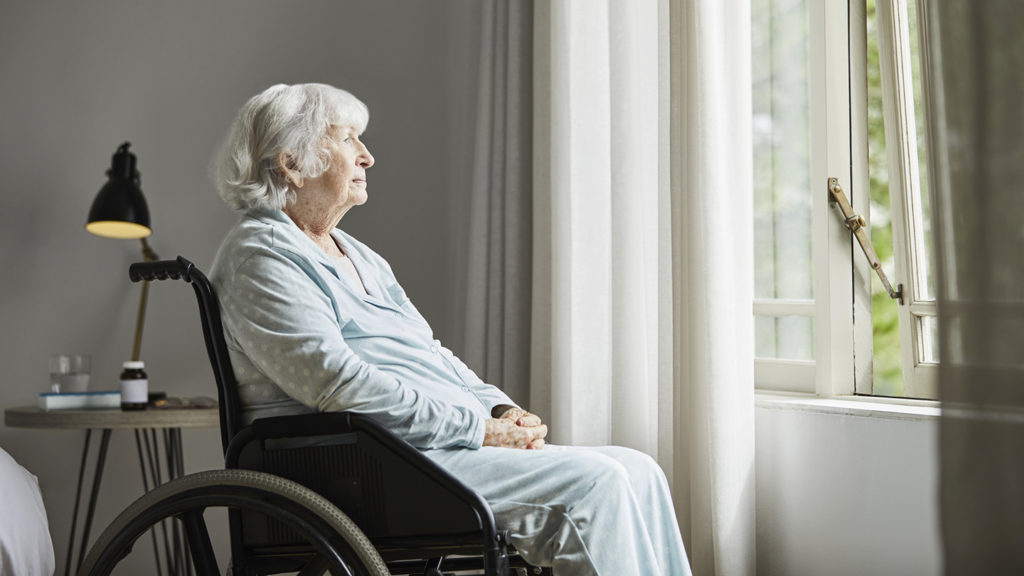

The quality of life tradeoffs incurred due to tight safety protocols and isolation of nursing home residents during the COVID-19 pandemic demand more research and policy changes.
This is especially true for residents with cognitive impairments like dementia, added Kathleen Unroe, MD, a Regenstrief Institute research scientist, in a new editorial in the Journal of the American Geriatrics Society.
“I think that we all want so badly just to move past the pandemic and put it out of our minds. And yet, I think we have to take the time to reflect on that experience to try to get to what we have learned about where the balance is,” she told McKnight’s Long-Term Care News Thursday.
Unroe emphasized that social isolation had long been a major challenge for the majority of nursing home patients that have cognitive impairments — even before it became a buzzword during the pandemic. That’s what makes current conditions so dire.
“I don’t know if we’ve recovered even to where we were,” she said. “I think we need to be more assertive about that. When someone is in a nursing facility because they have cognitive and functional impairments, it’s hard for them to be out and about.”
The difficulties of providing community connection and quality of life for patients with dementia reached a peak in the pandemic, exacerbated by a lack of dementia care training for staff and a harmful de-emphasis of the role of family members in providing care. But while that lesson was driven home by the pandemic, the problem has been important to face for much longer and remains so today, Unroe told McKnight’s.
“What can we do to bring programming, bring people, bring community, keep people connected?” she asked. “That’s what I think should be the priority.”
Looking back to move forward
Unroe referred to examples of residents’ family members being barred from care work they had once done regularly. When COVID policies shut them out from seeing their elderly loved ones, she could see the harm and distress it caused both that resident and their family.
“We need to take extra steps to make sure that we maintain these important connections,” she said, “making it as easy as possible for people to come and participate in life in the nursing home and for people to be able to leave the facility and participate in life in their neighborhoods and with their families.”
She highlighted an Indiana law that created an “essential family caregiver” role as a successful example of integrating policy with community connection. While not many states have pursued similar policies, Indiana has made the role permanent in case of any future health emergencies.
There is potential that the pendulum could swing too far away from prioritizing residents’ safety, she acknowledged.
“It’s really important that we’re guided by evidence in making these decisions,” she told McKnight’s. “Too often, we were flying by the seat of our pants… now we have a whole body of experience that needs to be codified into evidence to help us make these risk-benefit calculations.”
She emphasized that providers and researchers should be actively maintaining partnerships so that this process can continue and methods of reducing resident isolation and improving dementia care can be studied proactively — before another future emergency scenario.
Unroe pointed to the Moving Forward Coalition — a group of providers, residents, advocates and policymakers founded in 2022 to address challenges faced in long-term care — as a positive example of how providers can move forward on patient-centered care and directly pursue solutions together.





